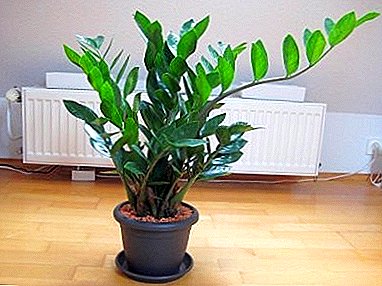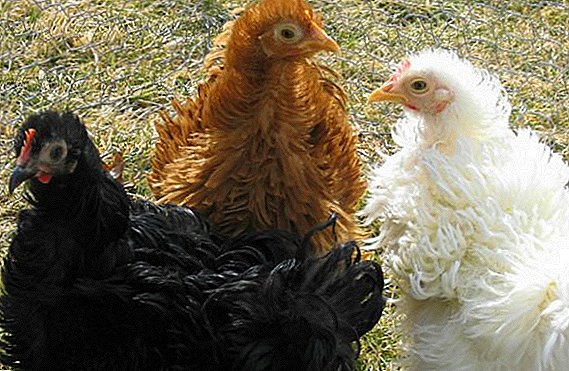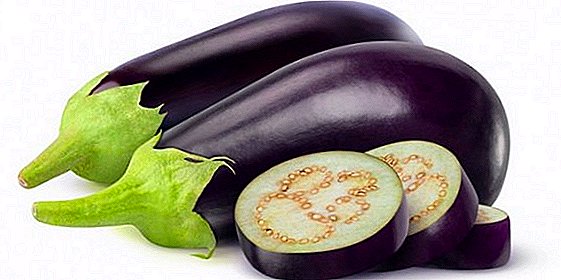
Zamioculcas (Lat. Zamioculcas) is considered an analogue of the "money tree". True, the small difference from the latter is that Zamioculkas has the ability to attract dollars into the house.
Few people know that Zamioculkas received the title of a “dollar tree” for a completely different reason: native of AfricaHe never enjoyed popularity with flower growers until, by chance, he came to Holland, it was there that he won first place in sales.
Its seeds were purchased by merchants only for dollars, hence its second name "Dollar palm". The cost of Zamioculcas in flower shops is quite high, although it is calculated in rubles, and not in dollars. Much more profitable and easier to learn how to breed Zamioculcas yourself.
How to reproduce the “dollar tree” at home?
The breeding methods of the “Dollar Tree” are presented below:
Tuber Split
Below is the answer to the question of how Zamioculcas breeds by tuber division:
The plant is carefully removed from the pot and inspect the root tubers, they must have buds or growth points, which will later give shoots. Tuber cut into pieces, powdered cuts activated carbon.
IMPORTANT! Tubers with only one growth point can not be cut, it will harm the plant, there should be several buds.
Then the parts of the plant with tubers are dried, usually 2-3 hours, not more, and planted in the ground. Soil is usual, universal. At the bottom of the pot must be placed expanded clay drainage. Soil can be mixed with sand, in proportion: 1 part of sand and 2 parts of soil. Read more about what kind of soil you need to choose for Zamioculkas and how to handle it, read here.
After planting the plant can not be watered for 4-5 days, then watering should be done by spraying the top layer of the earth with well-settled water.
Cuttings
Consider how to plant a “dollar tree” by cutting: For this method is suitable adult leaf of a plant, young sheets are not suitable, they are not sufficiently developed for breeding.
For this method is suitable adult leaf of a plant, young sheets are not suitable, they are not sufficiently developed for breeding.
From one adult leaf, you can get a sufficient amount of planting material, plant Zamiokulkas at home and share the cuttings with friends.
The sheet is cut into pieces, each piece must have 2 leaves, leaf tip - 3 leaves.
After this procedure, the prepared cuttings should lie down for a while in the air, it is necessary to sprinkle the cut points with activated carbon (approximately 1 cm bottom of the stem) or Kornevinom.
IMPORTANT! Cuttings can not be immediately planted in the ground, they can rot.
Plant cuttings in the usual universal soil. It is advisable to create after disembarkation "Greenhouse effect"For this, the stalk is covered with a glass jar. Watering produce in 3-4 days after planting, spray the top layer of soil with settled water. Usually the formation of tubers occurs during 1-2 monthsand six months later, new leaves appear.
Leaf and Leaf Plates
Let's consider how to grow a “dollar tree” from a leaf:
 For reproduction using this method, not only the adult leaf is suitable, but also the leaf plates of the plant.
For reproduction using this method, not only the adult leaf is suitable, but also the leaf plates of the plant.
The adult leaf of Zamiokulkas is cut, dried (many gardeners prefer to take only the upper part of the adult leaf with 5-6 leaf plates). The lower part of it is sprinkled with activated carbon or Kornevin (root growth stimulator) and planted in the ground.
Soil is used universal or "For succulents". Watering after leaf-planting is done in 3-4 days by spraying the top layer of soil with separated water. Tuber formation occurs 2-3 months after planting.
Leaf blades are cut from an adult leaf, dried base, powdered with activated carbon or Kornevin, and planted in sand and peat ground under the glass jar that creates the greenhouse effect. From time to time the bank must be lifted for airing. Watering should be done as usual after landing on the 5th day by spraying. In about a month, small white tubers appear at the base of the leaf.
Leaf or branch in water
How to propagate a flower in this way?
Adult leaf plants can be propagated in this way. Place the leaf in the water before the formation of the root system. But flower growers prefer methods rooting Zamioculkas in the ground.
For more details on how to plant an unpretentious Zamiokulkas plant with a process, an adult leaf with and without roots, as well as a young leaf, learn in this material.
A photo
Pictured Zamioculcas:



Growing up
 If you purchased Zamioculcas in a flower shop, do not rush to immediately replace it. He must to adapt to the new premises. Feed him, he prefers fertilizers for succulents.
If you purchased Zamioculcas in a flower shop, do not rush to immediately replace it. He must to adapt to the new premises. Feed him, he prefers fertilizers for succulents.
Place the flower in a comfortable environment. This plant does not like drafts, cold, like any tropical inhabitant. Light should be enough, but not direct sunlight.
AND do not hurry immediately filled up to drink your new tenant, especially after purchase. A week at least to water it is not worth it. If you properly care for Zamioculcas, you will be able to grow a lush bush with glossy dark green leaves.
To grow such beauty practically “from scratch” is possible from the leaf plates of the flower itself (this method was described above). For this, be patient and your work will be rewarded.
Cut the leaves (it is better to cut the sheet plates obliquely) sprinkle with activated charcoal, dry and plant in seedlings in sandy peat soil. Soil need a little pin downso that it is tight to the sheet.
To obtain faster rooting of the leaves, cover them with a glass jar. After 1-2 months, check the bases of the leaves, they should appear white nodules(some leaves may dry out, but there is no fear in it, just the leaf gave all its strength to form the tuber).
 If the nodules are formed, the leaves can be planted in a pot, and several pieces at once, this will allow you to grow a lush plant.
If the nodules are formed, the leaves can be planted in a pot, and several pieces at once, this will allow you to grow a lush plant.
The reproduction of Zamioculkas is a fairly simple process. We just need to remember that the plant toxictherefore, all breeding and planting procedures should be carried out with gloves. Growing Zamioculkas takes a long time, new shoots and leaves appear every 5-6 months, but with good and proper care, comfortable conditions for a flower, this can happen much more often.












